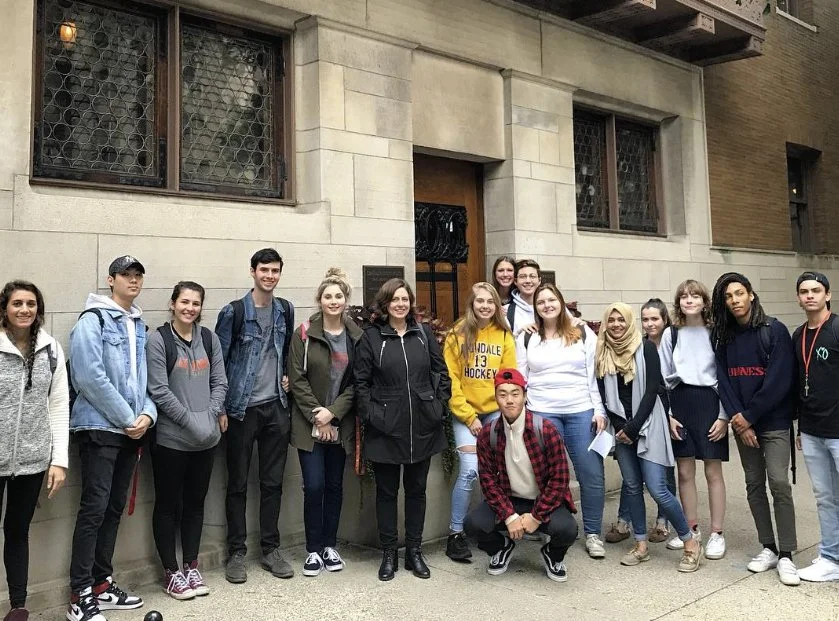
The Society of Architectural Historians & the Charnley-Persky House Museum
Dr. Rebecca Graff, center, leading a tour of the Charnley-Persky House for her Lake Forest College students, 2017.
Architectural tour of Frank Lloyd Wright’s Robie House, Chicago.
Pauline Saliga (1953-2022). Photograph by John Gronkowski.
Founded at Harvard University in 1940, the Society of Architectural Historians is a nonprofit membership organization that promotes the study, interpretation and conservation of architecture, design, landscapes and urbanism worldwide. SAH serves a network of local, national and international institutions and individuals who, by profession or interest, focus on the built environment and its role in shaping contemporary life. SAH promotes meaningful public engagement with the history of the built environment through advocacy efforts, print and online publications, and local, national and international programs. Learn more at https://www.sah.org/.
The National Historic Landmark Charnley-Persky House, designed by Adler and Sullivan with Frank Lloyd Wright (1891–1892), is recognized as a pivotal work of modern American residential architecture. Located in Chicago’s Gold Coast neighborhood, the building welcomes local, national, and international visitors throughout the year through guided tours and public programs. The house serves as the international headquarters of the Society of Architectural Historians. Learn more at charnleyhouse.org.
In Memory, and With Resolve: Archaeology + Architecture—Reflections from Rebecca Graff
This part of the web exhibit had been the hardest to conceive, to write, and to publish. When Pauline Saliga and I started this final phase of exhibit design, we realized, thanks to conversations with our consultants and the active listening of Robin Winge, our graphic designer and “exhibit doula,” that the biggest takeaway from our decade-long collaboration was simply this: that we gained a deeper, more meaningful insight into the past, present, and future of urban life when we crossed disciplinary boundaries and worked together. With archaeological research and architectural history—plus oral history and community knowledge—we were able to tell a story that delighted and challenged us.
But the story isn’t finished, not least because of Pauline’s sudden and unexpected death. Her loss is immense. It is tangible here, in the section of the exhibit that we were working on together. I still have emails from Pauline with lists of articles that we were going to read together to create this final essay.
With the exhibit opening without Pauline, it will be up to us to continue her legacy and produce work that defies the silos that we build. Because websites are dynamic, changeable spaces, I will update this section when I get a chance to return to Pauline and my notes, reconfiguring plans that must continue without her support.
-Rebecca Graff, October 26, 2022.
The Pauline Saliga Fund
The Pauline Saliga Fund will be used to defray SAH’s ongoing technology expenses and to recognize her achievements as a visionary proponent for new technologies in the humanities.
“SAH is thrilled to launch this fund in honor of Pauline, who is so beloved and valued by our community for her vision and accomplishments in the digital humanities. We are immensely grateful to the member who made the generous donation to establish the Pauline Saliga Fund,” said SAH President Patricia Morton.
During her 27-year tenure as executive director of SAH, Saliga guided digital projects such as JSAH Online, one of the first humanities journals to incorporate multimedia; SAHARA, an online archive of over 171,000 images of the global built environment used for research and teaching; and SAH Archipedia, an open-access, peer-reviewed encyclopedia of the built environment of the United States.
< Previous Page | Next Page >


